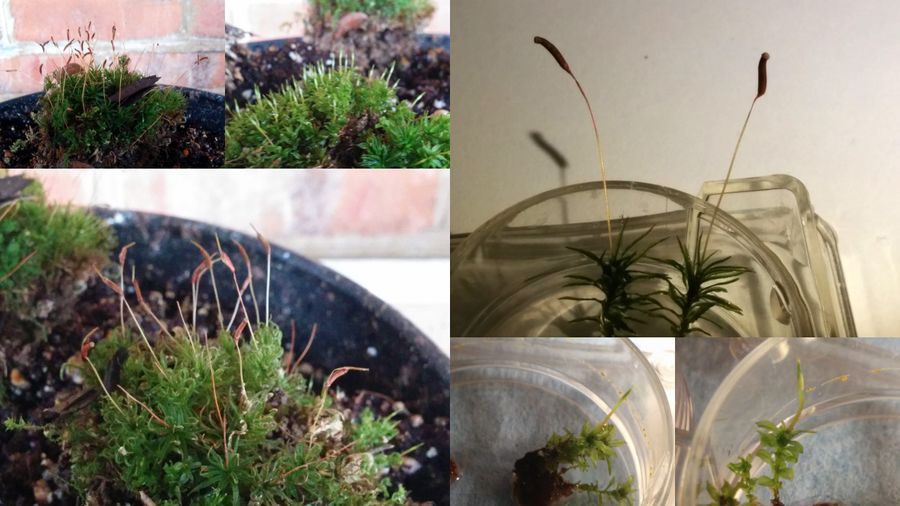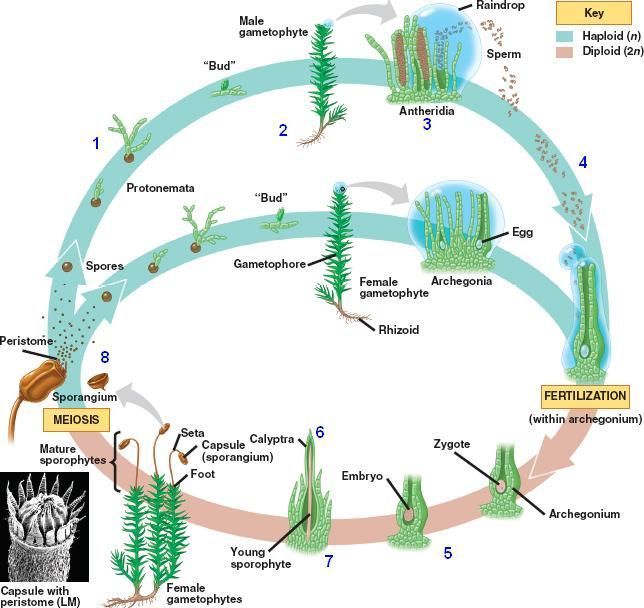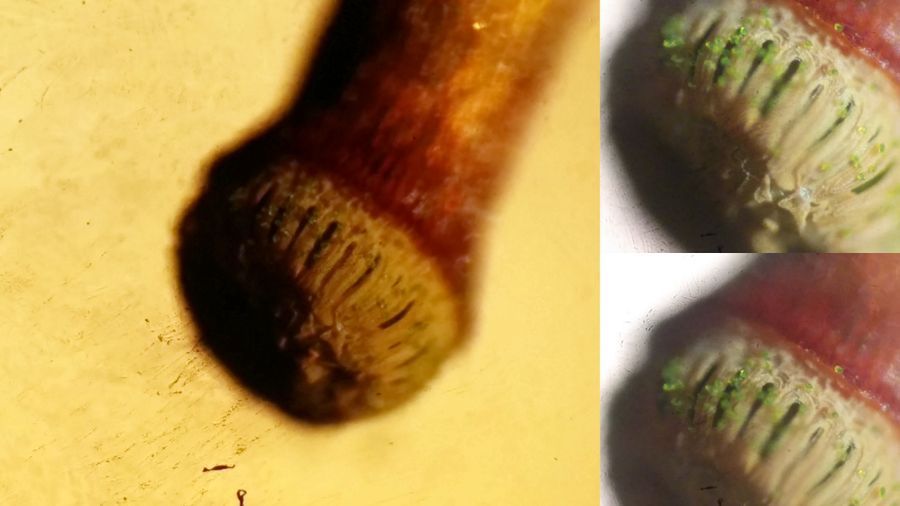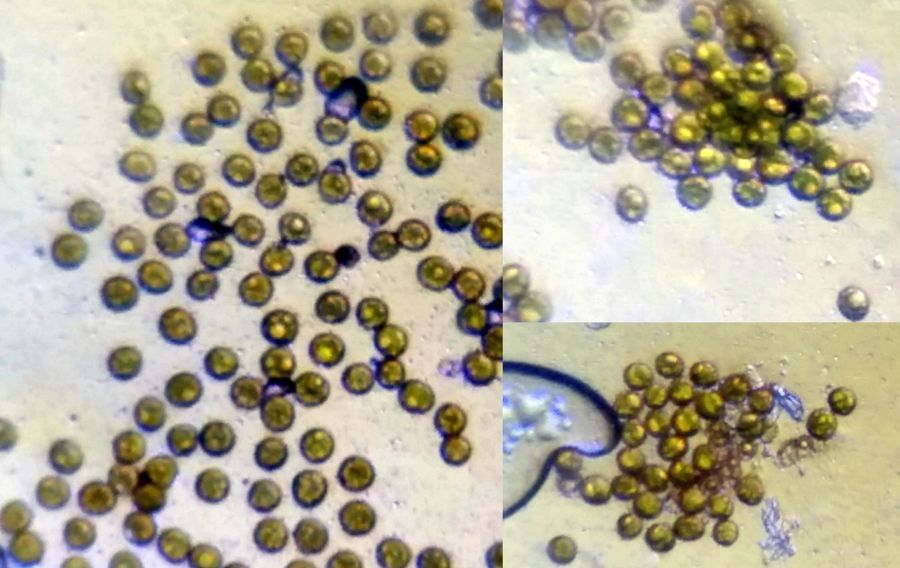The Moss in my backyard
 Jan 22, 2015 • 1:23 PM UTC
Jan 22, 2015 • 1:23 PM UTC Unknown Location
Unknown Location 140x Magnification
140x Magnification Microorganisms
Microorganisms
laksiyer
Human observer of life. https://sukshmadarshin.wordpress.com
97posts
1255comments
5locations

It is freezing in the North-east US and one of the days it almost stopped school. Even in this seemingly uninspiring weather, there is a life form which is flourishing — the almost unseen moss. A moss patch between a bush and a wall in a nice dark and moist place was pointed out to me by a bunch of kids playing hide and seek and they, very kindly, picked up some of it and brought it over for identification. My bryophytology is abysmal and I promised to get back to them with a name (If any experts are reading this, please enlighten). I wish there is an image searching database that with a picture and a few other parameters gave an approximate id of a species or a list of species with probabilities. I am sure it will happen someday. In any case, the bunch of moss had several sporophytes with moss capsules high above their haploid forms. I noticed two major types of capsules, one maroon and the other green. I suspect the latter is just an earlier developmental stage of the former.

Mosses are interesting in that they have what is known as alternation of generations. The form with leaves and root-like rhizoids are haploids and called gametophytes as they give rise to the male and female gametes at the tips of the plant. The antherozoids from the male gametes fertilize the single egg in the female gamete and give a diploid form which is still stuck to its mother haploid and this is called the sporophyte. The Sporophyte has three components, a foot that is stuck to its haploid mother, a stalk and a capsule at the top (also called sporangium). Spores are generated by the sporophytes by meiosis and hence they are haploid again. I wonder what would have happened if animals like us had a significant haploid form. Perhaps good sci-fi material. The shape of the capsule/sporangium is extensively used in classifying the different types of mosses. The sporophyte does not normally photosynthesize and hence has to stick to its mother for nutrition. (See cycle pasted from a website)

I took a closer look at the tip of the capsule with a 40x microscope for which I used a gooseneck table lamp to illuminate it from above. Capsules usually have a lid called the operculum, but this one’s operculum had fallen off suggesting that the capsule was ready to release spores. The mouth of the capsule had teeth on the outside (peristome) and they were tightly closed almost preventing the spores from being released (You can see a few spores stuck to the mouth of the capsule). Apparently the release of spores is highly regulated depending on the weather.

I then cut this peristome tip out with a blade and squeezed the capsule and out came a green dust that I could barely see. I put then under the foldscope with a drop of water and put a tape over it. Foldscope really gives some good views of the spores. The spores are uniformly shaped though not spherical and have some marks on them. Only a higher mag will resolve this :(. They all have chlorophasts (green color). I wonder if spore morphology would be a good distinguishing character for mosses (I am sure it is already known). If only one can generate an average 3D spore using all these spore pictures. I am sure there are many unknown moss species out there with interesting biology and Foldscopers have a great chance to add to the biology and diversity of the mosses. Perhaps one should be more systematic with the imaging and have leaf cells, gametophytes, sporophytes and spores at various magnifications. All this is entirely achievable on the move in the wild.

Spores are haploid and give rise to a protonema. I am planning to germinate these spores on a moist coffee filter and test if protonema emerge and image them. Until then, enjoy the below video. I used a trick similar to Manu’s for fixing the focus. My camera was stuck with cellophane tape to the only petri-dish I have. To prop up the slide I used a stack of glossy dinner passes and other advertisements that came in the mail. These are square shaped and small. These are nice in that I can increase or decrease the height easily as a glossy card can easily be slipped in or removed from a stack. Thanks Manu, fixed focus changes everything, including saving battery life on the camera.
Sign in to commentNobody has commented yet... Share your thoughts with the author and start the discussion!

 0 Applause
0 Applause 0 Comments
0 Comments_300x300.jpeg)

















